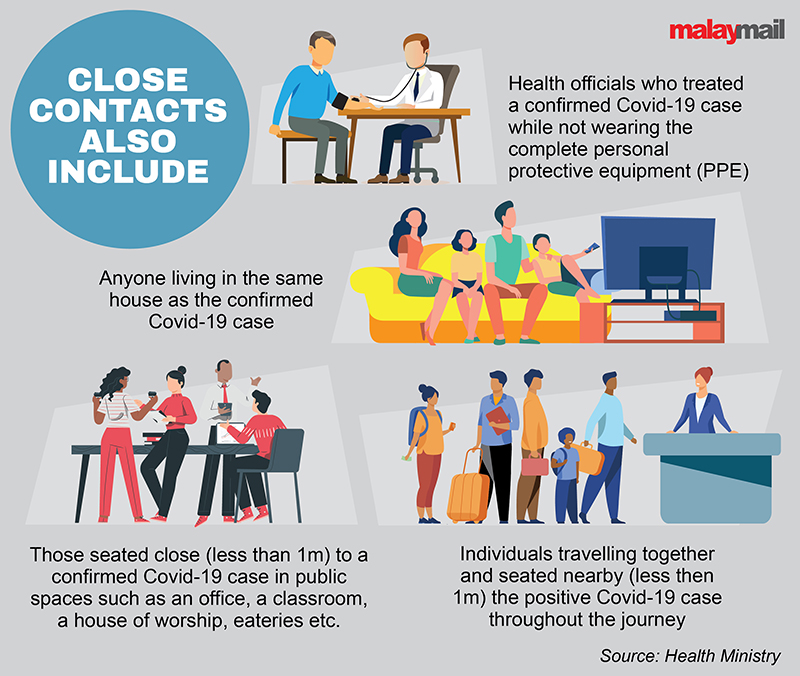KUALA LUMPUR, Oct 10 — As the country faces a third wave of Covid-19 infections with hundreds of new cases daily, health workers, besides treating them, have the arduous task of locating infected patients’ close contacts to avoid new clusters emerging and contain the spread.
A close contact, if infected, could unknowingly be spreading the virus around while remaining asymptomatic, further expanding the chain of infection or cluster.
But how would we know if we are a close contact? And what are close contacts?
 According to the Ministry of Health, close contacts are individuals who have been in direct contact or have interacted with a person who was later confirmed as a Covid-19 patient.
According to the Ministry of Health, close contacts are individuals who have been in direct contact or have interacted with a person who was later confirmed as a Covid-19 patient.
Due to the nature of the coronavirus with an incubation period of up to 14 days, contact tracing exercises are aimed at detecting every single person the infected individual met or interacted with over the last two weeks.
 Who are close contacts?
Who are close contacts?
Anyone who was face-to-face and less than a metre away or had physical contact with a confirmed Covid-19 case up to 14 days before they tested positive, would automatically be deemed a close contact.
This includes anyone living in the same household as the infected individual, and those seated less than one metre away from the positive case in places such as an office, a classroom, in eateries or any other public spaces for a prolonged period of time.
Travellers who were on the same trip, specifically those seated less than a metre away from the infected person throughout their journey will also be listed as a close contact.
Health officials not fully equipped with the complete personal protective equipment (PPE) who treated patients later confirmed as a Covid-19 case are also deemed as close contacts.
 The two types of close contacts
The two types of close contacts
After someone has been established as a close contact, the closest District Health Office (PKD) will detect and locate them through contact tracing measures and screen them for Covid-19.
From there, these close contacts are separated into two categories.
Those exhibiting symptoms would be classified as a Person Under Investigation (PUI), while an asymptomatic close contact is listed as a Person Under Surveillance (PUS).
Close contacts who later test positive for Covid-19 would immediately be brought to a public hospital to be isolated and treated.
Those who test negative on the first screening are required to serve a 14-day home quarantine, will be tested again on the 13th day and released from their quarantine once they get a negative result.



















